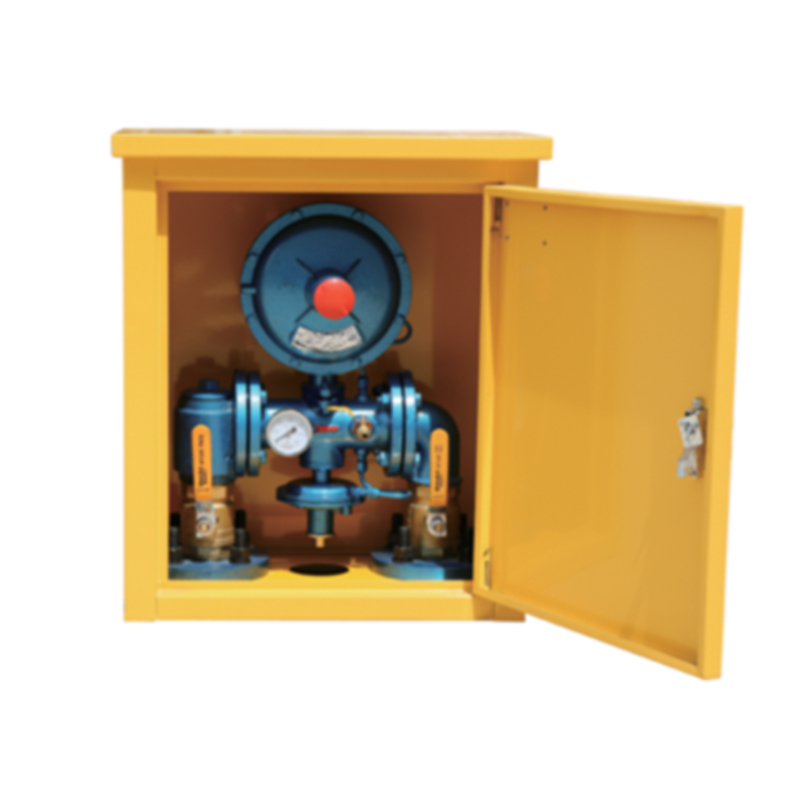
Nov . 09, 2024 13:23
Back to list
Natural Gas Pressure Reduction System Overview and Applications
Natural Gas Pressure Regulator An Overview
Natural gas plays a crucial role in today’s energy landscape, powering homes, industries, and transportation systems worldwide. While it is an efficient and cleaner fossil fuel, the safe and efficient use of natural gas relies significantly on the proper regulation of its pressure. This is where a natural gas pressure regulator comes into play.
What Is a Natural Gas Pressure Regulator?
A natural gas pressure regulator is a vital component in any natural gas distribution system. Its primary function is to control and maintain the pressure of natural gas as it travels from the supply source to the end-user. Gas pressure can vary widely depending on factors such as temperature, flow rate, and elevation. A pressure regulator ensures that gas is delivered at a consistent and safe pressure level, which is essential for the safe operation of appliances and equipment that rely on natural gas.
How Does It Work?
The operational mechanism of a natural gas pressure regulator is relatively straightforward. At its core, it uses a diaphragm that responds to changes in gas pressure. As gas flows into the regulator, the internal pressure pushes against the diaphragm. When the pressure exceeds the predetermined set point, the diaphragm moves to throttle the gas flow, reducing the pressure to the desired level.
There are two main types of pressure regulators
1. Line Pressure Regulators These are typically installed on the main supply line and help manage the pressure entering the distribution system. 2. Point-of-Use Regulators These are installed at the appliance level (such as gas stoves, furnaces, and water heaters) to ensure that the appliance receives an optimal pressure level for safe and efficient operation.
Importance of Natural Gas Pressure Regulation
.
2. Efficiency Regulators improve the efficiency of natural gas appliances. Each appliance is designed to operate at a specific pressure range. Proper regulation ensures that these devices work effectively, thus optimizing performance and conserving gas.
مخفض ضغط الغاز الطبيعي

3. Protection of Equipment Excessive pressure can damage gas appliances, leading to costly repairs or replacements. By maintaining the correct pressure level, regulators prolong the life of the equipment.
4. Compliance Many jurisdictions have strict regulations regarding natural gas supply and usage. Installing pressure regulators not only helps in adhering to these safety standards but also in passing inspections.
Common Applications of Natural Gas Pressure Regulators
Natural gas pressure regulators are used in various applications, including
- Residential Kitchens Ensuring that gas stoves, ovens, and grills receive the appropriate pressure for safe cooking. - Heating Systems Maintaining optimal pressure for boilers, furnaces, and other heating appliances, especially during winter when demand spikes.
- Industrial Use Factories and industrial plants utilize natural gas for heating and power generation. Pressure regulators are essential in these applications to ensure safe and efficient operations.
Maintenance and Considerations
Regular maintenance of natural gas pressure regulators is crucial to ensure their functionality and reliability. This includes checking for leaks, confirming that the set pressure is within safe limits, and replacing worn components. Homeowners and facility managers should consult qualified technicians for installation and maintenance to comply with safety standards and regulations.
Conclusion
Natural gas pressure regulators are indispensable components in the natural gas supply chain. They ensure that gas is delivered safely, efficiently, and reliably, making them critical for both residential and industrial applications. As the world increasingly turns to natural gas as a key energy source in the transition to cleaner fuels, the role of pressure regulators will continue to be paramount in ensuring safety and efficiency in its utilization. Understanding how these devices function and their importance can help consumers and industry professionals make informed decisions regarding their natural gas systems.
Latest news
-
Safety Valve Spring-Loaded Design Overpressure ProtectionNewsJul.25,2025
-
Precision Voltage Regulator AC5 Accuracy Grade PerformanceNewsJul.25,2025
-
Natural Gas Pressure Regulating Skid Industrial Pipeline ApplicationsNewsJul.25,2025
-
Natural Gas Filter Stainless Steel Mesh Element DesignNewsJul.25,2025
-
Gas Pressure Regulator Valve Direct-Acting Spring-Loaded DesignNewsJul.25,2025
-
Decompression Equipment Multi-Stage Heat Exchange System DesignNewsJul.25,2025

